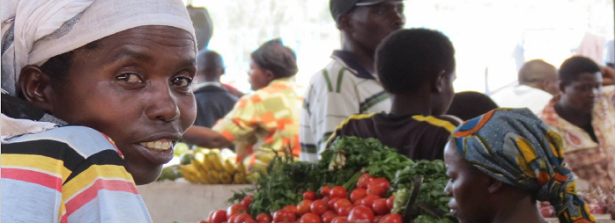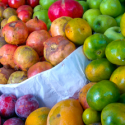Enhancing the effectiveness of agriculture-to-nutrition pathways

Increased agricultural productivity does not automatically translate to improved nutrition. This is the main challenge addressed in a new report by Royal Tropical Institute (KIT), in collaboration with the Food & Business Knowledge Platform. KIT recently finalized a one-year research project to generate policy relevant recommendations for the improved design and evaluation framework of nutrition sensitive agricultural interventions. It particularly explored how women empowerment can be considered a key entry point to link agriculture with nutrition outcomes and to better understand the different impact pathways from agriculture to nutrition. The report “Enhancing the effectiveness of agriculture-to-nutrition pathways: Key insights from a gender analysis of impact evaluation design” and an executive summary are now available online.
Please download the full report (PDF).
Please download the executive summary (PDF).
The report dives into past impact evaluations of nutrition sensitive agricultural programs to unpack the different approaches to how they analyzed women’s empowerment. It focuses on evaluation objectives, evaluation design methodologies and choice of indicators. The paper applies a women’s empowerment lens to an agricultural-nutrition pathways framework to understand how nutrition sensitive programs addressed women’s role and influence (or lack thereof) in relation to key decision making moments along the pathways. These include decisions on what is produced, what is sold and how income is used, and how these influence what is consumed in the household and by whom. The household, and intra household dynamics, are the level that the analysis of the impact evaluations specifically looks at.
It explores how evaluations designs and project designs perpetuate implicit understandings of women empowerment and women’s role in agriculture, which influence the evidence generated on how women’s empowerment matters for key pathways from agriculture to nutrition. It critically analyses how the choice of indicators used at impact and outcome level have implications for interpretations of how women empowerment may aid or hinder expected impact pathways from agriculture to nutrition. It specifically looks at how women empowerment can be a key entry point to link agriculture with nutrition outcomes.
These findings are used to distil key recommendations for how nutrition sensitive evaluation designs can more effectively measure and create the evidence on how agricultural programs can contribute to nutrition, through women’s empowerment.
As the results have shown, women’s empowerment is always an essential aspect to understand and address to create the link between agricultural programs and nutrition outcomes. Not only can this be achieved by including women’s empowerment as an additional objective of the program, but women’s empowerment can also be positioned as a means towards realizing nutrition outcomes. It depends on the context and the starting point of a project, to what degree women’s empowerment is desirable and considered needed. These lessons are important for future program design, implementation, monitoring and evaluation.
A quick glance at the recommendations for an improved design and evaluation framework of nutrition sensitive agricultural interventions include the following. These are elaborated in more detail together with ‘promising approaches’ that implement some of these recommendations in the main report.
Recommendations
Intervention design
- When designing agricultural programs to be more-nutrition sensitive, carefully consider what types of nutrition impact is realistic in the scope of your program.
- Adopt integrated and aligned programming of agriculture and nutrition related interventions.
- Consider piloting and testing different intervention modalities and document learning.
- Consider creating space in the design of Monitoring, Evaluation and Learning Systems for local interpretations of women’s empowerment through participatory monitoring systems.
Indicators for measuring women’s empowerment
- At a minimum, consider including ‘do no harm’ indicators to capture the potential harmful or unintended consequences to women of agriculture nutrition programmes throughout implementation.
- When women’s empowerment is understood as a mediating process towards nutrition (means to an end), consider using multiple indicators that capture the three domains of empowerment (agency, resources, institutional structures) aligned with the scope of a project.
- When the focus of evaluation is to measure women empowerment at impact level, consider using existing validated measures of women’s empowerment.
Evaluation design
- Consider including an explicit objective within the evaluation design to distinguish between:
- How nutrition sensitive agricultural interventions empower women (impact)
- How women’s empowerment contributes to improved dietary diversity (mediating factor)
- Consider using multi method evaluation designs.







Thanks for this great piece of research. Can the methodology be applied to evaluate a program that did not address women empowerment nor nutrition? Can it apply to classical impact studies?
Thank you Richard, for your reaction and interest. We would welcome that you and other readers would apply the gendered analysis of agriculture-nutrition pathways in your own work. We will ask the KIT team to explain the opportunities to use this methodology in your particular programme.
The F&BKP Office team